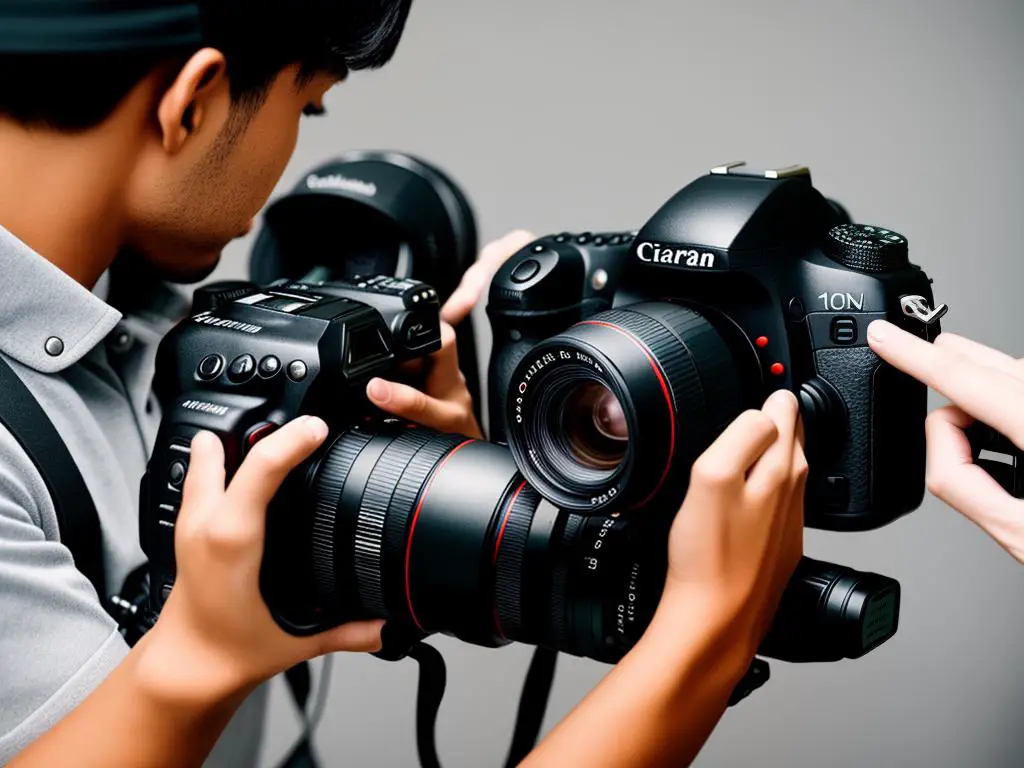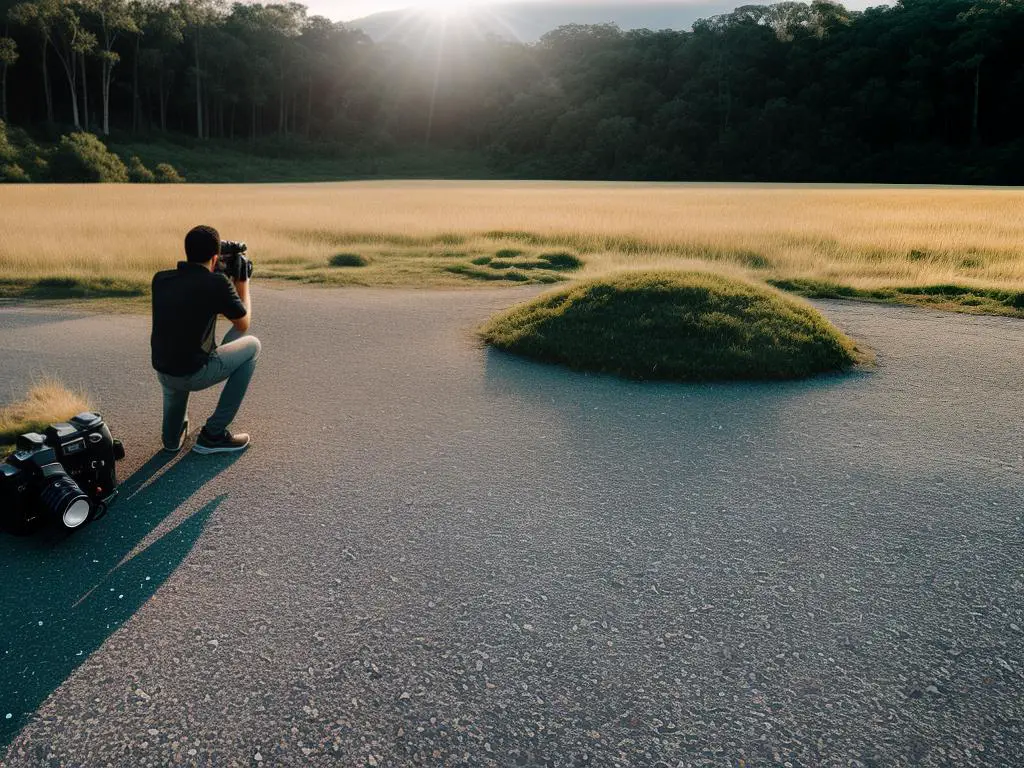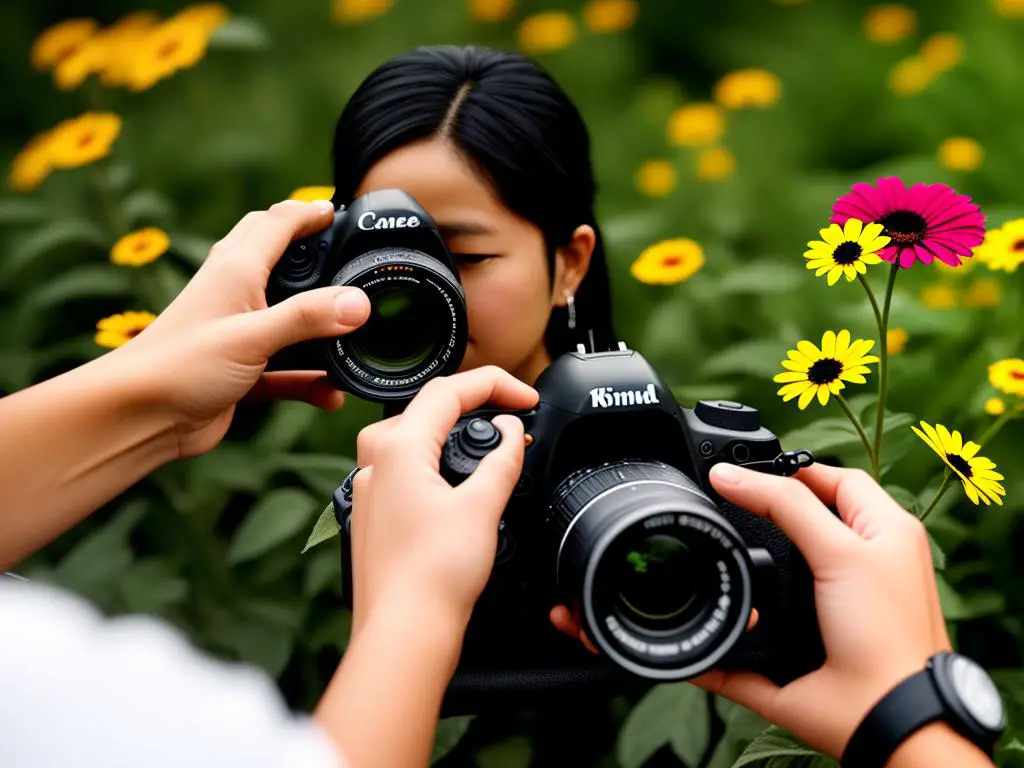Photography is a powerful art form and an incredibly versatile medium, transforming the way on how we view our world. Grasping the basic knowledge about understanding camera settings, framing, composition, and practicing a variety of shot types can greatly enhance the results of your photography. Beginning with camera settings, understanding the trio- ISO, shutter speed, and aperture, is critical in producing quality images. Further, we will explore fundamental composition techniques like the rule of thirds, leading lines, and symmetry, to better guide our photographic vision. Finally, we will venture into the practice of different shot types, to further enhance your skills and broaden your experience.
Understanding camera settings
Understanding Camera Settings: ISO, Shutter Speed, and Aperture
Photography, at its core, is all about controlling and manipulating light. The three main elements of camera settings that control the light and thus, affect the quality and nature of your photos are ISO, shutter speed, and aperture. By understanding and adjusting these settings, you can take perfectly exposed photos in a variety of environments and lighting conditions.
ISO
ISO refers to the sensitivity of your camera’s sensor to light. Lower ISO values (like 100 or 200) mean lower sensitivity to light and are perfect for brightly-lit situations, such as shooting outdoors on a sunny day. Higher ISO numbers (like 800, 1600, or even 3200, depending on your camera’s capabilities) increase the sensor’s sensitivity to light, making them useful for lower-light situations like indoors or during dusk. However, a higher ISO can introduce more grain or “noise” into the image.
Shutter Speed
Shutter speed controls how long the camera’s shutter stays open to allow light to hit the sensor. Measured in seconds or fractions of a second, faster shutter speeds (like 1/500th or 1/1000th of a second) allow less light in and freeze the action in the frame. They are great for shooting moving subjects like sports events or active children. Slower shutter speeds (like 1/60th or a few seconds) allow more light in and can result in blurred motion, useful for creating a sense of movement like flowing water or moving clouds.
Aperture
Aperture refers to the size of the opening in the lens. It affects the quantity of light that reaches the camera’s sensor and also influences the depth of field. A larger aperture (lower f-stop numbers like f/1.4 or f/2.8) lets in more light and creates a shallow depth of field, blurring the background and making the subject stand out. This setting is great for portraits. A smaller aperture (higher f-stop numbers like f/16 or f/22) lets in less light and creates a greater depth of field, keeping more of the scene in focus. This setting is commonly used in landscape photography.
Adjusting Settings for Different Conditions
When shooting in different environments and lighting situations, adjusting ISO, shutter speed and aperture becomes crucial. In bright light conditions, use a lower ISO, faster shutter speed and smaller aperture. In low light, increase ISO, slow down the shutter speed and widen the aperture. But remember, there’s no ‘one-size-fits-all’. Each scene requires specific judgement and might persuade you to make compromises on noise, movement and depth of field to get your shot. Consider using your camera’s built-in light meter for guidance.
By understanding ISO, shutter speed and aperture, you can master the exposure triangle, which forms the foundation of photography. Experiment with these settings, and over time, you’ll get the hang of adjusting them to achieve the desired effects in your shots.

Framing and composition
Understanding the Rule of Thirds
The rule of thirds is a basic composition technique in photography that involves dividing the image into thirds. Imagine your viewfinder or screen divided into a grid of nine equal squares, often with two vertical and two horizontal lines. The rule suggests that you should place the main subjects or focal points along these lines, or at the points where they intersect. This method often creates an aesthetically pleasing result, as it provides a sense of balance and interest.
Leveraging Leading Lines
Leading lines are an effective compositional element that directs the viewer’s eye toward the main subject of your photo. The lines can be anything from a path, road, river, fence, or the edge of a building – real or implied. By strategically placing leading lines, you guide the viewer’s attention to the area you want. You could frame them to intersect with your subject or lead the eye from the foreground all the way to the background, creating depth and perspective.
Exploring Symmetry in Composition
Symmetry, another principle in photography, involves mirroring one half of your shot with the other. The symmetry can be vertical (top half mirrors the bottom half), horizontal (right half mirrors the left half), or radial (elements radiate from a central point). When used deliberately, symmetry adds balance and harmony to photos, making them more aesthetically appealing to viewers. However, perfect symmetry can sometimes feel staged or predictable, so don’t be afraid to break it for a more dynamic and captivating shot.
Additional Composition Techniques
Other basic composition techniques include framing and depth of field. Framing involves using elements of the environment to surround the main subject, such as doors, windows, trees or even people. This technique enhances the subject by providing context and directing the viewer’s attention. Depth of field, on the other hand, refers to focusing on a particular part of the image (usually the subject), while the background and foreground appear blurred. This effect can be achieved by adjusting the aperture settings on your camera.
Remember to practice and experiment with these techniques regularly. The key to mastering composition is to understand the rules but not feel confined by them. After all, some of the most striking photos are those that break the rules in creative and innovative ways.

Practicing various shot types
Practice Close-Up Shots
Close-up shots are meant to show intense details of the subject. To practice this type of shot, start by choosing an object with distinct features like a flower, a coin, or a person’s face. Set your camera or device on Macro mode (often symbolized with a flower icon) to allow for sharper focus on small areas. Try getting as close to the subject as possible until the details are clear and emphasized. It’s okay if the background is blurry; that can even enhance the focus on the subject.
Mastering Portrait Shots
Portrait shots aim to capture the personality of the person or animal in the image. It often involves focusing on the face and expression, though full-body shots are also popular. For these shots, place the subject in front of a neutral background to avoid distractions. Pay attention to lighting; soft and natural light often provides the best result. Use the Portrait mode (sometimes labeled as a silhouette of a person) on your device if available. Try to interact with the subject to evoke genuine expressions.
Shooting Landscape Shots
Landscape shots generally capture vast spaces, nature, or cityscape. To practice, choose an area with good scenic views. Use a wide-angle lens setting if available, or the Landscape mode (symbolized by mountains or a city skyline) on your device. Ensure all areas of the shot are in focus, from the closest object to the furthest horizon. Experiment with different times of day to experience how lighting affects the mood and details in the scene.
Capturing Action Shots
Action shots involve capturing subjects in motion. This could be anything from sports events, moving cars, to birds in flight. Switch your camera to the Sports mode (often represented by a running figure) or Action mode if available. Increase your shutter speed to freeze the motion in the frame. Practice panning, where you move your camera at the same speed as the moving subject; this could give your images a sense of speed and motion. Remember, action shots often require multiple attempts to get the perfect shot; patience is key.
Use Different Angles and Perspectives
Don’t limit yourself to shooting straight on. Experiment with different angles and perspectives; this introduces a new dimension to your image, making it more interesting. Try shooting from low to high (upward), high to low (downward), or shoot at an angle.
Each different type of shot requires different camera settings and techniques. Practicing each one will help you understand how lighting, focus, and framing impact your final image. As you become more comfortable with each basic shot, you can start to get creative and blend techniques for more unique, personal shots.

Crafting good photos demands a keen understanding of camera settings, a well-developed sense of composition, and a diversity of shooting experiences. Evolving from a photography novice to a true artist is not an overnight affair, but a journey of taking one step at a time, from adjusting your ISO, shutter speed, and aperture, to incorporating the rule of thirds, symmetry, and leading lines in your compositions. The journey doesn’t end there, as you constantly experiment and practice different shot types, expanding your photographic repertoire. Equip yourself with these fundamental principles and techniques, and let your creativity flow, capturing the beauty of the world through your lens.